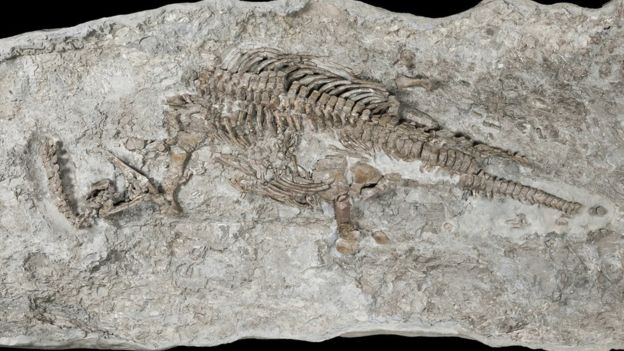
A new fossil is shedding light on the murky past of the sea reptiles that swam at the time of the dinosaurs.
With tiny heads on long necks and four pointed flippers, plesiosaurs have been likened to Scotland’s mythical Loch Ness monster.
The German discovery proves that these sea creatures were alive more than 200 million years ago during the Triassic.
The fossilised bones give clues to how the animal survived a mass extinction that wiped out most living things.
”We now have the proof that this extremely successful group of marine reptiles already existed during Triassic times,” said paleontologist Martin Sander of the University of Bonn, who examined the fossil with colleague, Tanja Wintrich.
”This had been suspected for over 150 years, but it took a surprisingly long time for the hard evidence to emerge. ”
Plesiosaurs were not as hard hit by the extinction as shallow water and coastal animals. Their fossils have been found all over the world in Cretaceous and Jurassic rocks.
”What is also interesting is the location of the find in Germany, in Europe,” said Prof Sander.
”Three hundred years ago, the first plesiosaurs were found in England and the Continent, and now we have come full circle.”
The scientists found the skeleton buried in a clay pit owned by a German brick company near the village of Bonenburg.
The creature had a very stiff neck, which probably prevented it from twisting its head from front-to-back or side-to-side.
The research is published in the journal, Science Advances. Plesiosaurs ruled the oceans for more than a hundred million years before dying out at the same time as the dinosaurs.
